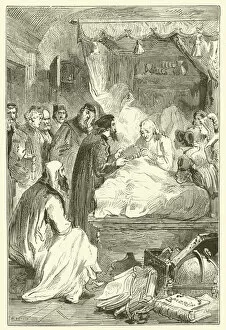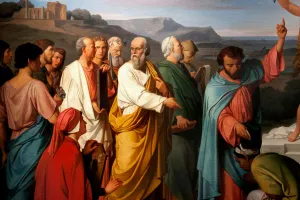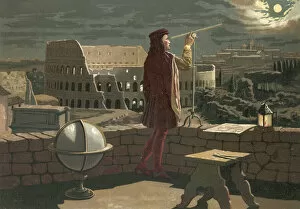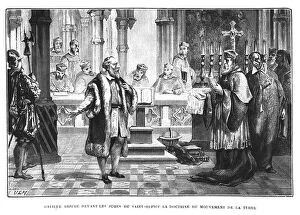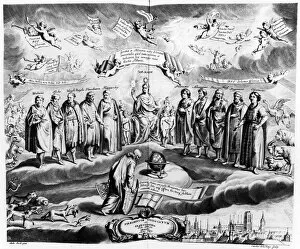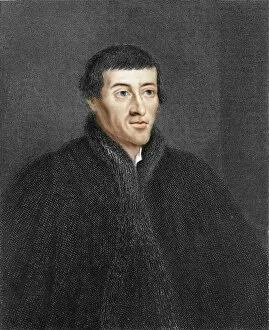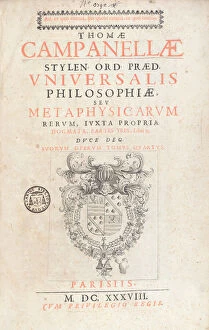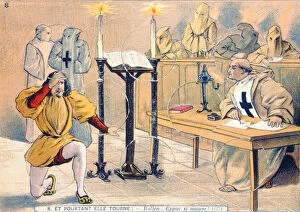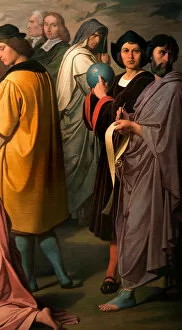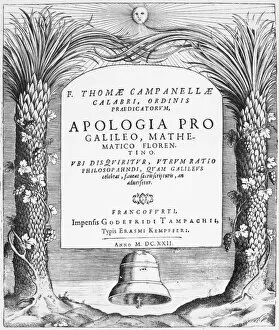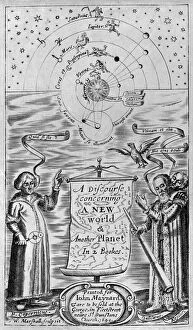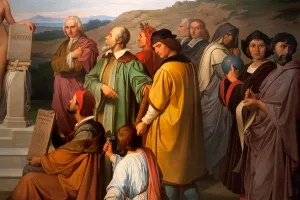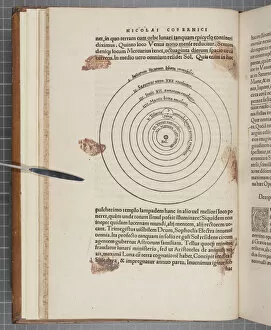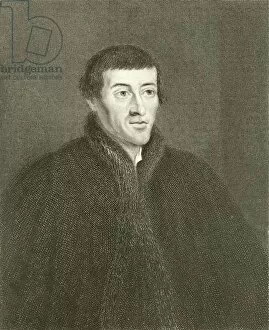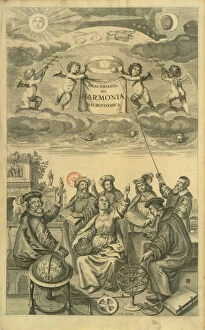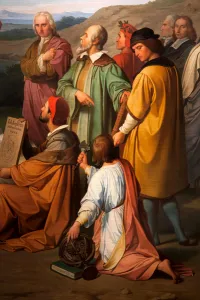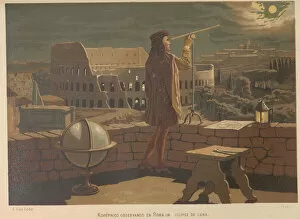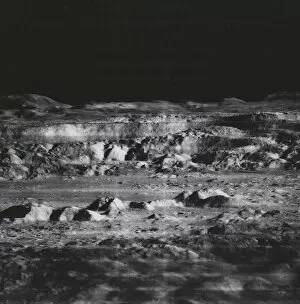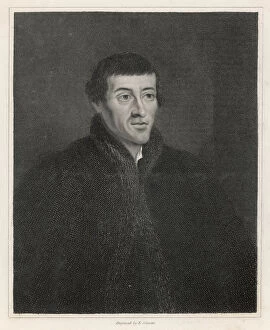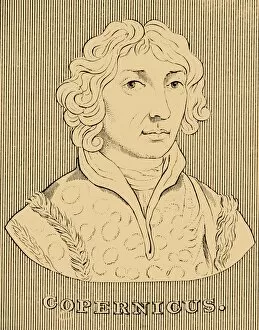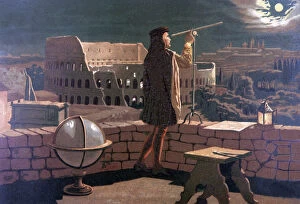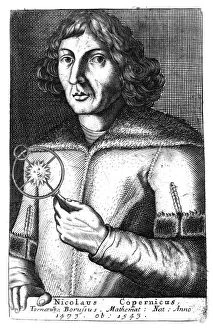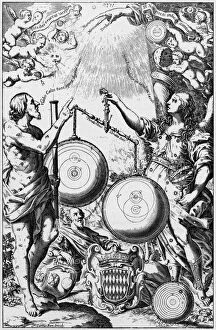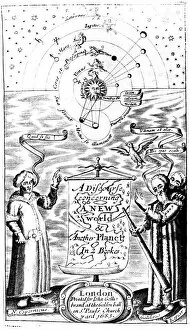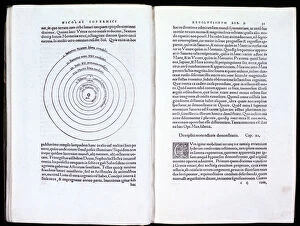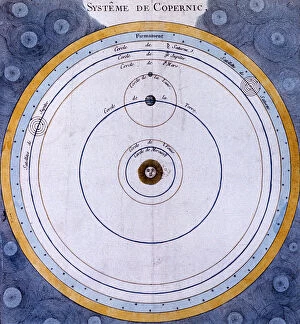Copernicus Collection (page 2)
"Discovering the Cosmic Truth
All Professionally Made to Order for Quick Shipping
"Discovering the Cosmic Truth: Copernicus and His Revolutionary Ideas" In this captivating copperplate engraving from Andreas Cellarius' Atlas Coelestis seu Harmonia Macrocosmica, published in 1660 in Amsterdam, we witness a celestial spectacle. The Full Moon shines brightly against the backdrop of the universe, with the sun positioned at its center. At lower right stands Nicolaus Copernicus himself, while Ptolemy takes his place at lower left. Copernicus, an esteemed astronomer whose groundbreaking work shook the foundations of our understanding of the cosmos, presents his revolutionary system. With unwavering conviction, he places the sun as the focal point of our Solar System - a concept that challenged centuries-old beliefs and sparked a scientific revolution. This intricately detailed map showcases Copernican Universe's grandeur and complexity. Every planet finds its rightful place around our radiant star. As we explore this celestial masterpiece colored with enchanting hues by Dutch artisans in the 17th century, we are reminded of Copernicus' audacity to challenge convention and seek truth beyond what was readily accepted. Nicolaus Copernicus (1473-1543), an intellectual luminary ahead of his time, dedicated his life to unraveling Orbes Celeste – heavenly spheres that governed planetary motion. Through meticulous observation and mathematical calculations, he unveiled a cosmic dance where planets orbited harmoniously around their central star. Gazing upon this mesmerizing lunar eclipse within Cellarius' engravings transports us back to an era when astronomers like Copernicus dared to question prevailing wisdom. Their relentless pursuit led humanity towards enlightenment and expanded our knowledge about our place in this vast universe. Today, as we marvel at these historical depictions meticulously preserved through time's passage, let us honor Nicolaus Copernicus - not merely as an astronomer but also as a symbol of human curiosity and resilience in unlocking the mysteries of our existence.

